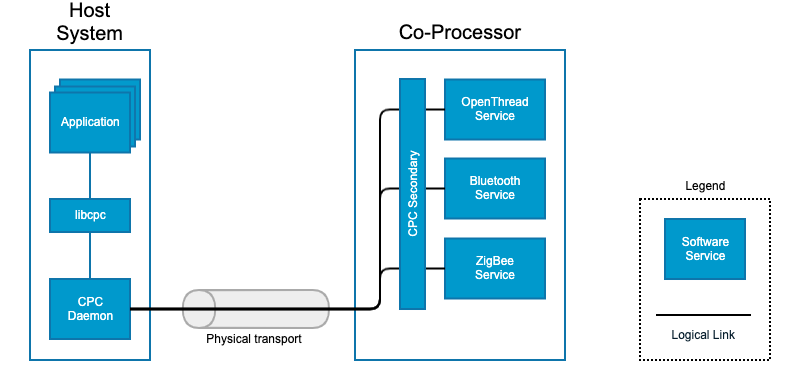Co-Processor Communication
Overview
The purpose of the Co-Processor Protocol (CPC) is to act as a serial link multiplexer that allows data sent from multiple applications to be transported over a secure shared physical link.
In CPC, data transfers between processors are segmented in sequential packets over endpoints. Transfers are guaranteed to be error-free and sent in order.
The CPC secondary interacts with the host's CPC daemon over an encrypted UART or SPI link.
Read and write operations with the CPC API are thread-safe and zero-copy. Care must be taken to only alter the passed buffer when alteration is allowed and to free any buffer provided by the CPC core to the user. It is worth mentioning that, in order to minimize memory allocation, when the write buffer is encrypted the original content is lost and replaced by its encrypted counterpart.
The
CPC daemon
(CPCd) supports the upgrade of the secondary's firmware in standalone bootloader mode via UART XMODEM and SPI EZSP. The upgrade image must be in Gecko Bootloader (.gbl) format. For this function to be available, the secondary must have the Gecko Bootloader installed, and the secondary application image must be generated with the component
bootloader_interface
.
 CPCD Diagram
CPCD Diagram